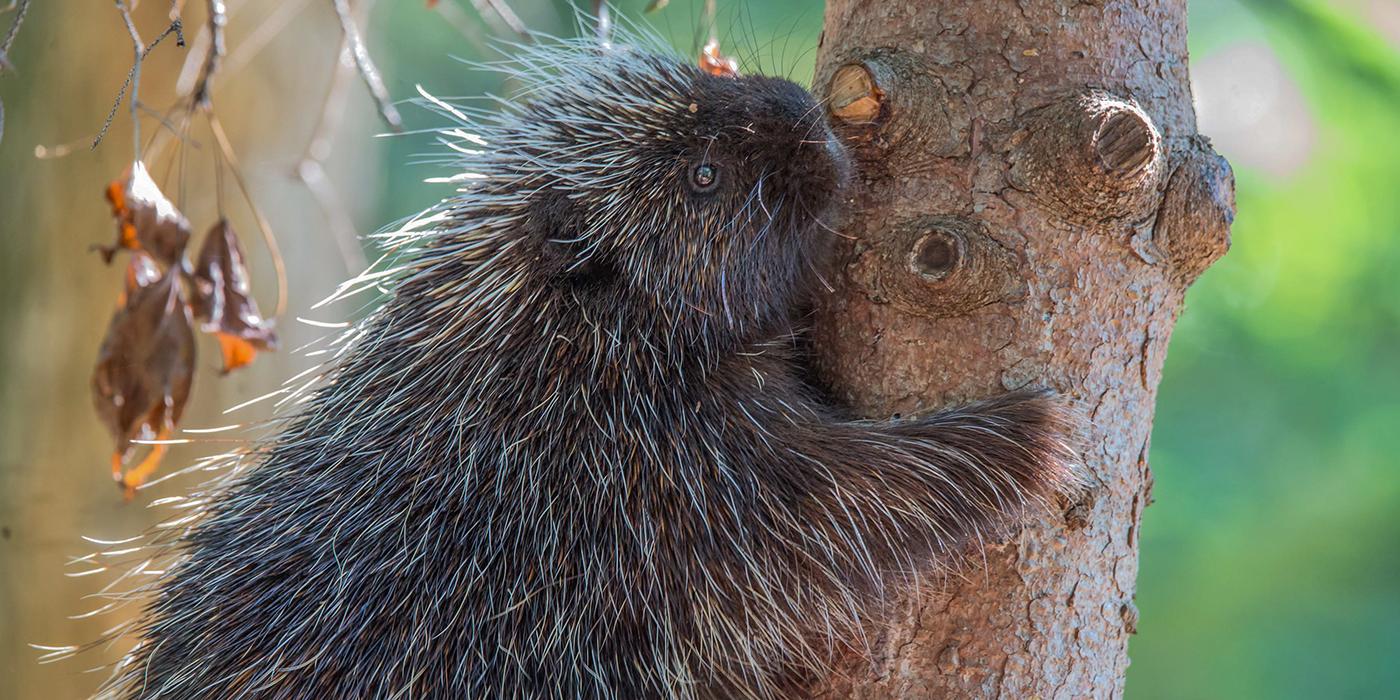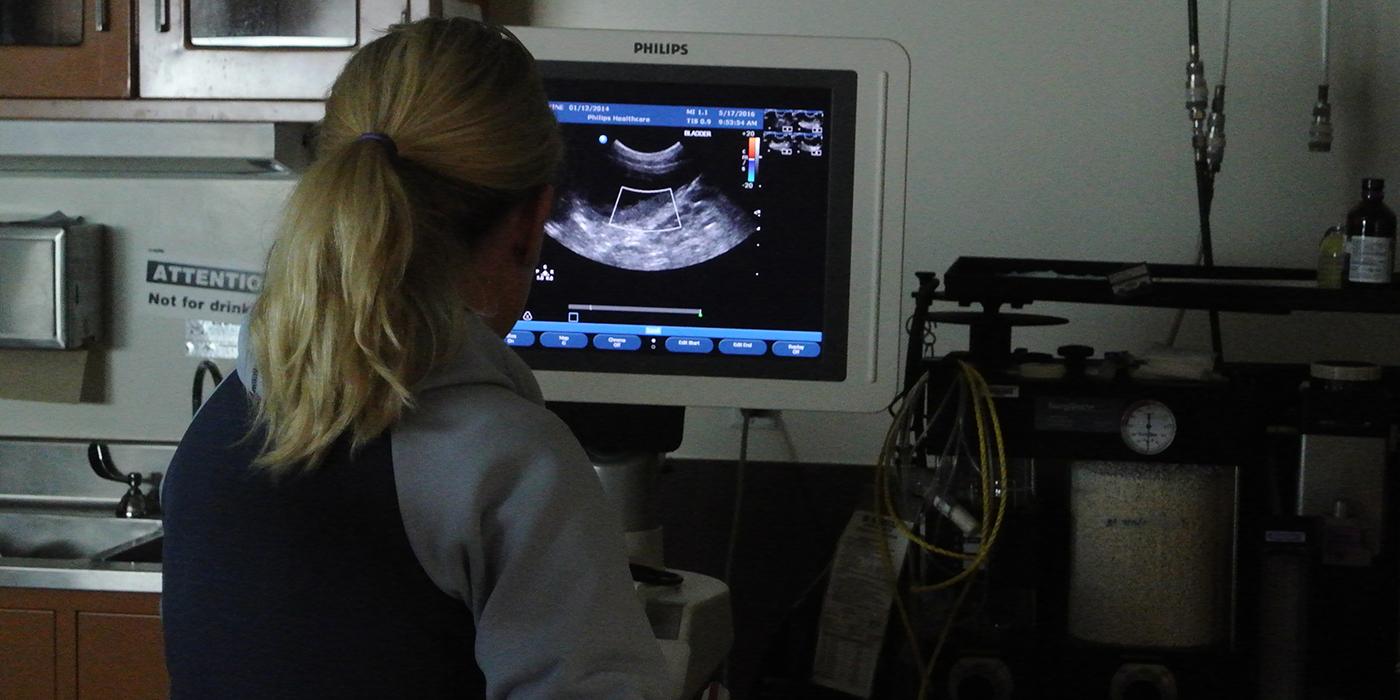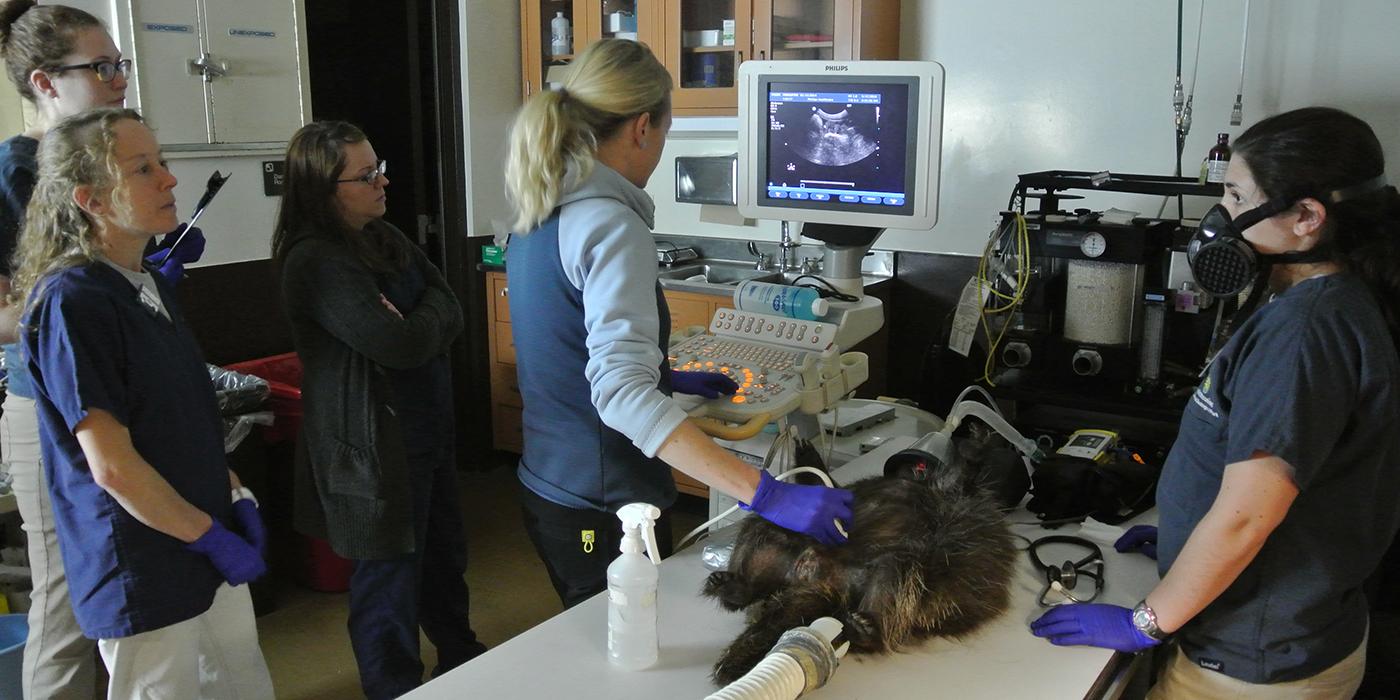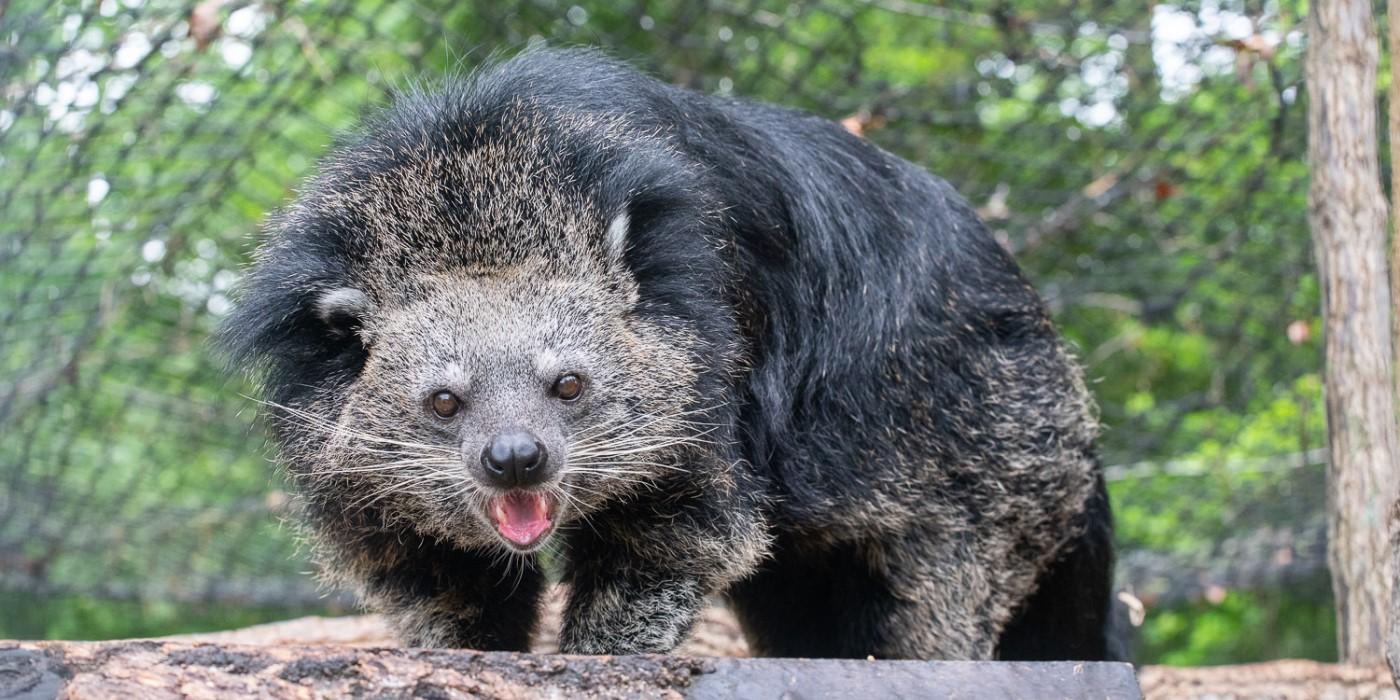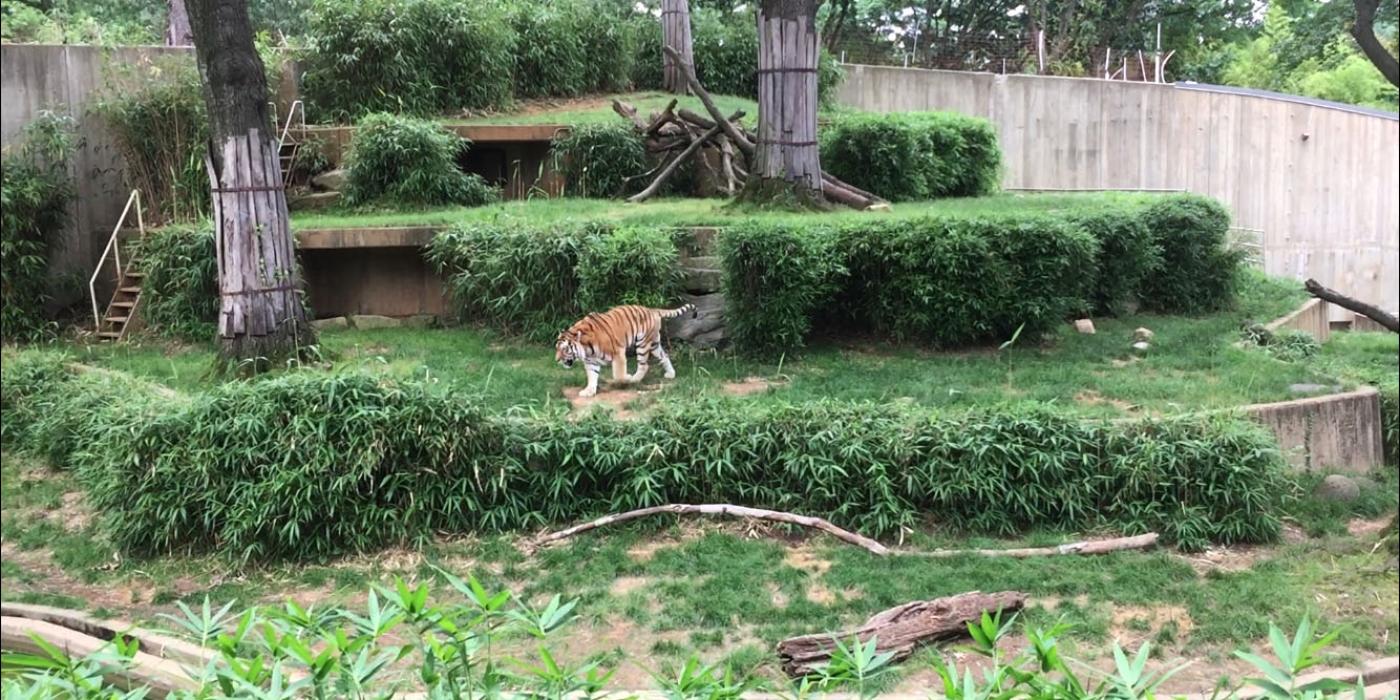North American Porcupine Q&A
Eight-year-old North American male porcupine Quillby has had some difficulty moving around his exhibit lately. How do we determine what's ailing him? Teamwork! Zoo veterinarian Jessica Siegal-Willott and biologist Leigh Pitsko collaborated with colleagues at the Friendship Hospital for Animals to get to the bottom of Quillby's imbalance. Learn how teamwork helped solved the mystery in this Zoo vet Q & A.
This story appears in the June 2016 issue of National Zoo News. Want animal tales delivered straight to your inbox? Sign up for the e-newsletter here.
What did Quillby's first exam reveal?
We found a few things out of the ordinary. Our first discovery was that Quillby's ears were quite dirty. Typically, dirty ears wouldn't be a concern. However, excessive debris within the external ear canal (the part we can see) can mean that there is a buildup of material in the middle and/or inner ear. When there is fluid buildup within those areas, it can lead to balance loss and difficulty moving. So, we cleaned Quillby's outer ear canal. We took some radiographs of his skull to evaluate the middle and inner ear compartments, but they didn't reveal any issues.
An ultrasound gave us greater concern; there was an abnormality in his bladder that was creating a mass effect. However, there was also a large amount of crystals within the bladder; when crystals accumulate along the bladder wall, they can give the appearance of a mass.
Why did Friendship Animal Hospital provide a second opinion?
Our collaboration with Friendship Hospital for Animals extends across the Zoo's collection, ranging from gibbons to porcupines, fishing cats to Chinese water dragons, and many other species in between. From this collaboration, we're able to learn and share our expertise, skills and knowledge with one another. Our field is ever-evolving, so it's great to work with and learn from consulting neurologists, radiologists, surgeons, anesthesiologists, clinical pathologists, and internal medicine specialists.
On the off chance Quillby's bladder did have a mass, we elected to consult with Friendship Animal Hospital's radiology and ultrasound specialists. We sent them images from his initial exam, and their veterinary radiologists confirmed that there appeared to be a mass effect within his bladder.
We wanted to re-check his abdominal ultrasound, so we asked Elyshia Hankin, a clinical radiologist at the Friendship Hospital for Animals, if she could examine Quillby.
What did Quillby's second exam reveal?
Friendship Hospital for Animals' Dr. Hankin used the ultrasound probe to examine Quillby's abdomen and manipulate his bladder. What appeared to be a mass effect was actually a group of crystals that had solidified and fallen against the bladder wall. When she moved the probe, some of the crystals dislodged. We took a urine sample to help determine what type of crystals were in Quillby's bladder and how many there were.
What's next for Quillby?
When an animal has crystals in his or her bladder, it can develop secondary problems, including stone formation in the kidneys or in the urethra. It can also cause bladder infections. We did not see evidence of a kidney stone either today or in last week's exam, but if the crystals are affecting him enough, there is possibly a chance that it is affecting his mobility. So, we will continue to watch Quillby closely for any evidence of discomfort that would correlate with a stone.
Some crystals that can be found in animals are normal and do not need any treatment, while others require medication and/or diet modification to prevent their formation. The crystals in Quilby's urine do not require treatment at this time unless they form a stone.
Related Species:

